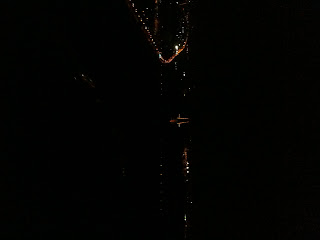Haha, no this photo is not me or anyone else i know. Infact it was pretty much the first photo that came up in google when i searched for "wet drills." So that's what i'm going to talk about today. We had to do all our emergency procedures last week, which involved ground emergencies and also ditchings. We don't actually carry life rafts on our planes, so it was a little silly, but it's more for the rare occaison of a double engine failure or something and a search and rescue plane would assumedly drop one in our position till further help could be made.
So the day starts off with a lot of theory and learning basically what each bit of equipment is, where it's located, how it's used and also the limitations. A lot of this was box ticking exercises, but it was also very interesting to see it in a practical manner, rather than just reading about it. There is virtually an acronym for everything in the airline world, and an acronym on how to use the before said acronym. So for all the equipment we had SLOP (serviceability, location, operation and precautions.)
This meant for the fire extinguisher, that the serviceability was the pin in place, its in its holder and it was full pressure, located in the cockpit, forward cabin and 2 at the rear, operation was the PASS acronym (pulls, aim, squeeze, sweep) and precautions included the BCF can be quite harmful to breathing and in a closed space, and that you cannot use it on metal fires. I won't go through too many of these, but trying on the portable breathing equipment, such as the smoke hoods and also the pilots quick don oxygen mask was kinda cool. Its weird, you put them on it and it's like you forget how to breathe normally. Anyway, it's basically to show you so you have a feel for it all before you go on the line to fly.
So the first day also involved going to the plane, seeing the equipment stored, and also playing with the emergency exits, and how we would do a brief for a land evacuation. It's fairly involved as to what equipment a first officer carries and what exit he is responsible for. (PS- we are the first to find an exit and get out of the plane!! just saying!) So it was definately a good experience. The second day was an exam and the practical ditching side of things, where we exited a mock cabin into a pool, inflated life jackets and did a few exercises involving rafts, such as climbing into it and also trying to set up the roof that the raft has. This was not easy!! They also turned off the lights and have a huge sprinkler system in the roof that simulates rain. We got very cold and wet trying to do this, but it was also a really good experience.
So thats my EP's done for 12 months. I guess the biggest thing out of this was really how hard cabin crew work on safety and how much responsibility they have in the cabin. For just about everything, pilots have a locked door policy in flight and are virutally forbidden to go back and check out anything. They have to deal with fires, passengers, angry passengers, potentional threats, passenger safety, and know it back to front, all while keeping a smile and having good customer service. I don't think i could do it, so a big kudos to them for keeping the cabins safe.




















































